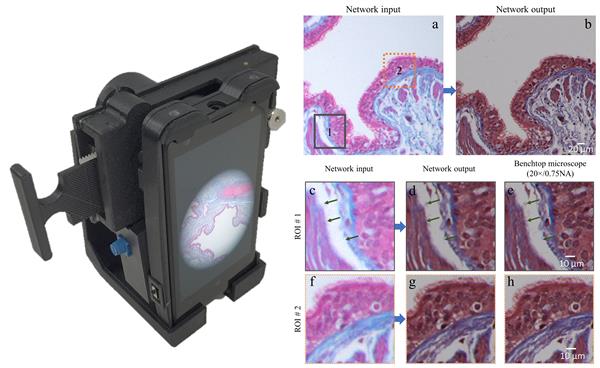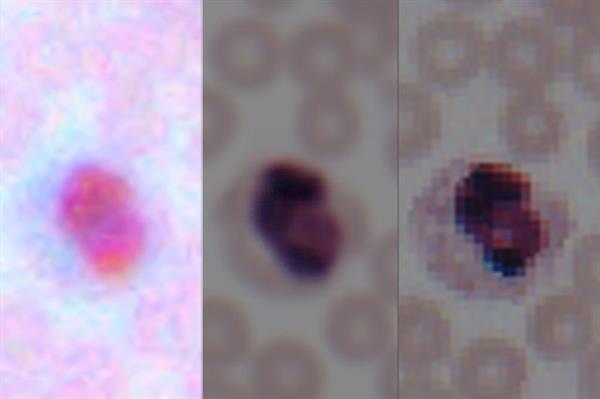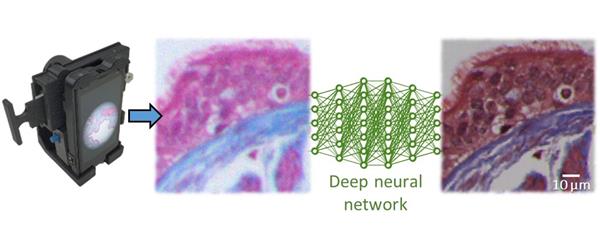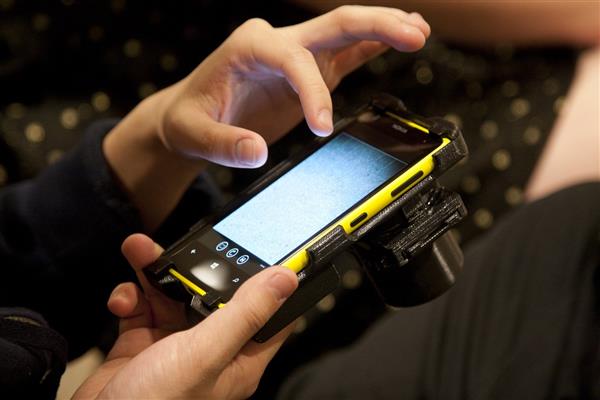Researchers based at UCLA’s Samuel School of Engineering have recently made use of 3D printing technology in order to improve the potential of smartphone cameras. Their 3D printed devices can capture microscopic images, when attatched to a smartphone camera lens. These images are then put through deep-learning artificial intelligence systems, increasing the resolution and color details of smartphone images so much that they can approach the quality of images from laboratory-grade microscopes. This breakthrough could prove invaluable for carrying out medical diagnoses in situations or areas of the world where resources and equipment are limited.

This is where 3D printing came in handy. Instead of having to spend huge amounts of money on high-end portable microscope equipment, the team 3D printed the microscope attatchments for the smartphone. This technique meant that each device cost less than $100 each to put together. These microscope devices, when placed over the smartphone camera lens, are capable of hugely enhancing the visibility and resolution of the details captured by the image sensor. From the initial camera resolution, they are enhanced to a scale of approximately one millionth of a meter.
Once these improved images are captured, there is still some way to go before they can be used in a scientific context. The attachment can compensate for low resolution in the base camera lens and image sensor, but more advanced computing techniques are required to properly reproduce the level of resolution and color details that are needed for a laboratory analysis.

“Using deep learning, we set out to bridge the gap in image quality between inexpensive mobile phone-based microscopes and gold-standard bench-top microscopes that use high-end lenses,” said Aydogan Ozcan, Chancellor’s Professor of Electrical and Computer Engineering and Bioengineering. “We believe that our approach is broadly applicable to other low-cost microscopy systems that use, for example, inexpensive lenses or cameras, and could facilitate the replacement of high-end bench-top microscopes with cost-effective, mobile alternatives.”
The team tested their system out on lung tissue samples, as well as blood and pap smears. A high-end microscopic image was taken of each specimen, as well as an image with the microscopically enhanced smartphone camera. These pairs of corresponding images were fed into a digital system that uses a specially designed deep learning code, in order to learn exactly how to enhance the resolution of the lower-quality image, quickly and accurately.

(All images, credit: UCLA/Ozcan)
The success of their project points the way forward for use of this technique in medical diagnostics and other healthcare applications, improving the portability as well as accessibility of advanced microscopy.
Ozcan led the project alongside Yair Rivenson, a UCLA postdoctoral scholar. Building upon previous studies by Ozcan’s group that used deep learning to reconstruct holograms and improve microscopy, the results of this latest project were published in ACS Photonics, a journal of the American Chemical Society.
Apr 11, 2018 | By David

